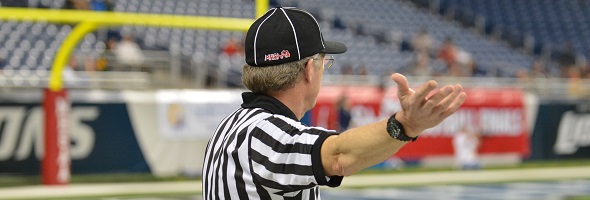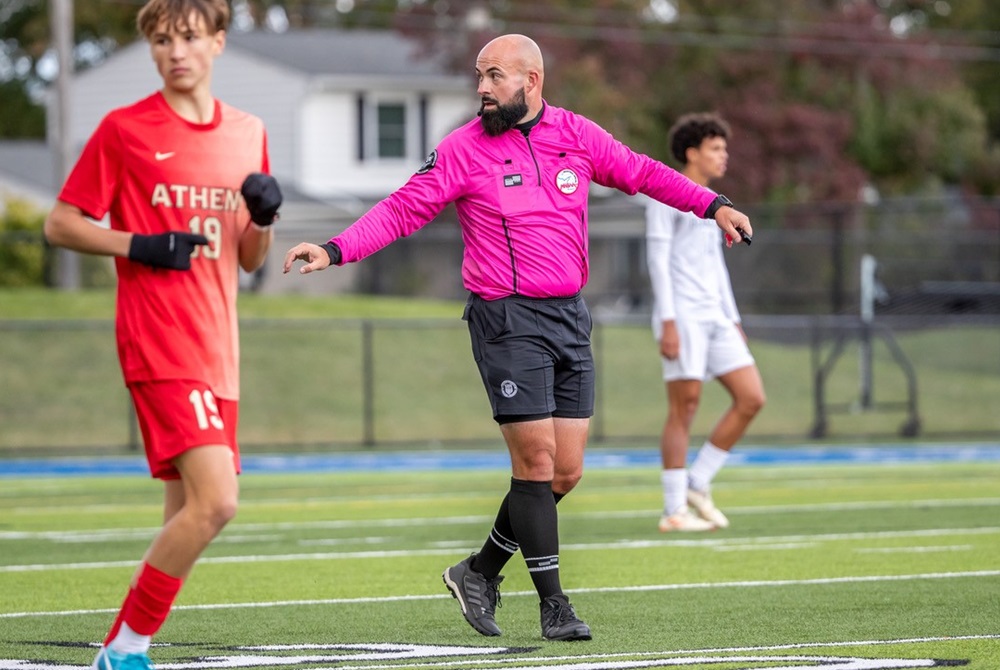
Be the Referee: Officials & Injuries
October 9, 2014
This week, MHSAA assistant director Mark Uyl explains the official's role when it comes to player injuries.
"Be the Referee" is designed to help educate people on the rules of different sports, to help them better understand the art of officiating and to recruit officials. The segment can be heard on Mondays, Wednesdays and Fridays during the school year on The Drive With Jack Ebling on WVFN-AM, East Lansing.
Below is this week's segment - Officials & Injuries - Listen
Player safety is the number one topic in football, from the NFL level to college to high school, all the way down to the youth levels. We often get the question, what is the official’s role when it comes to player injuries?
Officials have no role in diagnosing injuries. However, they must be constantly aware of what’s taking place on the field, and whenever a player is showing signs and symptoms of a possible injury, the game needs to be stopped and that team’s staff alerted to a possible injury.
The decisions on that injury are made by the team’s staff, which often includes a doctor, certified athletic trainer and members of the coaching staff to be certain that the best interests of the student-athlete is being followed in every case.
Past editions
Oct. 1 - Overtime - Listen
Sept. 25 - Field Goals - Listen
Sept. 18 - Tackle Box - Listen
Sept. 11 - Pass Interference - Listen
Aug. 25 - Targeting - Listen

Be the Referee: You Make the Call - Soccer Offside
By
Paige Winne
MHSAA Marketing & Social Media Coordinator
October 15, 2024
Be The Referee is a series of short messages designed to help educate people on the rules of different sports, to help them better understand the art of officiating, and to recruit officials.
Below is this week's segment – "You Make the Call" - Soccer Offside - Listen
We’ve got a soccer “You Make the Call” today.
Team A has a player – number 9 – in offside position.
Team A’s number 1 takes a shot on goal that hits the crossbar and deflects right to number 9. The player collects the ricochet, shoots and scores.
What’s the call?
- Goal is awarded because the ball deflected to number 9?
- No goal because number 9 was in an offside position and gained an advantage for being in the offside position?
- Or – Caution number 9 for being offsides and interfering with the play?
If you said “no goal because number 9 was offsides and gained an advantage,” you are correct.
Play would restart with an indirect free kick for Team B from where the ball was played by number 9 of Team A.
Previous 2024-25 Editions
Oct. 8: Roughing the Passer - Listen
Oct. 1: Abnormal Course Condition - Listen
Sept. 25: Tennis Nets - Listen
Sept. 18: Libero - Listen
Sept. 10: Cross Country Uniforms - Listen
Sept. 3: Soccer Handling - Listen
Aug. 24: Football Holding - Listen
(Photo by Adam Sheehan.)

